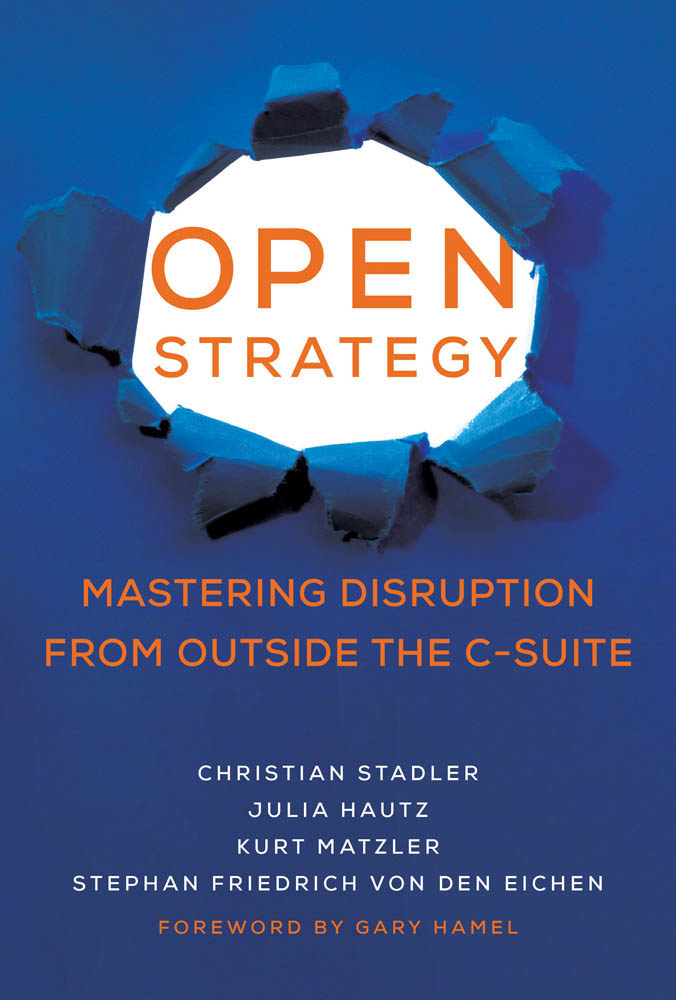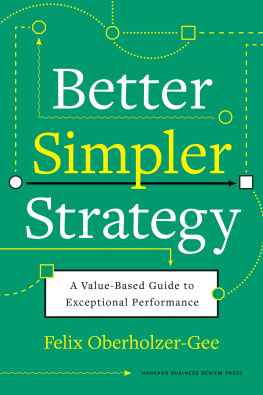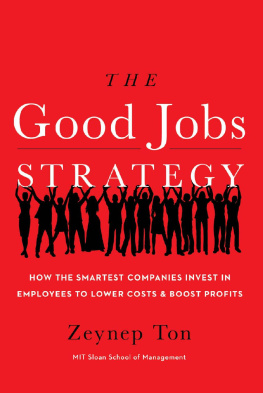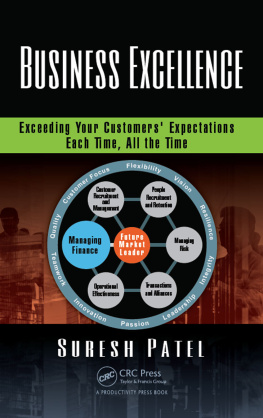Contents
Guide
Pagebreaks of the print version

Management on the Cutting Edge series
Paul Michelman, series editor
Published in cooperation with MIT Sloan Management Review
The AI Advantage: How to Put the Artificial Intelligence Revolution to Work
Thomas H. Davenport
The Technology Fallacy: How People Are the Real Key to Digital Transformation
Gerald C. Kane, Anh Nguyen Phillips, Jonathan Copulsky, and Garth Andrus
Designed for Digital: How to Architect Your Business for Sustained Success
Jeanne W. Ross, Cynthia Beath, and Martin Mocker
See Sooner, Act Faster: How Vigilant Leaders Thrive in an Era of Digital Turbulance
George S. Day and Paul J. H. Schoemaker
The Leader in a Digital World: From Productivity and Process to Creativity and Collaboration
Amit S. Mukherjee
The Ends Game: How Smart Companies Stop Selling Products and Start Delivering Value
Marco Bertini and Oded Koenigsberg
Open Strategy: Mastering Disruption from Outside the C-Suite
Christian Stadler, Julia Hautz, Kurt Matzler, and Stephan Friedrich von den Eichen

Open Strategy
Mastering Disruption from Outside the C-Suite
Christian Stadler, Julia Hautz, Kurt Matzler, and Stephan Friedrich von den Eichen
Foreword by Gary Hamel
The MIT Press
Cambridge, Massachusetts
London, England
2021 Christian Stadler, Julia Hautz, Kurt Matzler, and Stephan Friedrich von den Eichen
All rights reserved. No part of this book may be reproduced in any form by any electronic or mechanical means (including photocopying, recording, or information storage and retrieval) without permission in writing from the publisher.
The MIT Press would like to thank the anonymous peer reviewers who provided comments on drafts of this book. The generous work of academic experts is essential for establishing the authority and quality of our publications. We acknowledge with gratitude the contributions of these otherwise uncredited readers.
All interior illustrations were created by Guido Schlaich.
Library of Congress Cataloging-in-Publication Data
Names: Stadler, Christian, author. | Hautz, Julia, author. | Matzler, Kurt, author. | Eichen, Stephan Friedrich von den, author.
Title: Open strategy : mastering disruption from outside the C-suite / Christian Stadler, Julia Hautz, Kurt Matzler, and Stephan Friedrich von den Eichen.
Description: Cambridge, Massachusetts : The MIT Press, [2021] | Series: Management on the cutting edge series | Includes bibliographical references and index.
Identifiers: LCCN 2020050155 | ISBN 9780262046114 (hardcover)
Subjects: LCSH: Strategic planning. | Business planning.
Classification: LCC HD30.28 .S666 2021 | DDC 658.4/012--dc23
LC record available at https://lccn.loc.gov/2020050155
d_r0
In the ancient Chinese manual The Art of War, military strategist Sun Tzu advised generals to keep their plans to themselves if they wanted to defeat their adversaries. By discovering the enemys dispositions and remaining invisible ourselves, he wrote, we can keep our forces concentrated, while the enemys must be divided. Most executives and managers today take such advice to heart, zealously guarding their core strategies as well as the thinking, market data, and product information that contribute to them.
But what if theyre wrong?
To Florence, Benjie, and Leah.Christian
To Benedikt, Frida, and Greta.Julia
To Maximilian, Felix, and Ruth.Kurt
To Brigitta and Felix.Stephan
We also want to thank those who supported our experimentation with open strategy at a time when it was a less obvious choice. These are the pioneers we salute!
And to Seth Schulman, for helping us to tell our story.
Contents
List of Figures
Preparing for open strategythe open strategy toolbox.
How much do you think the bottle costs?
Percentage of projects that are open strategy.
Reasons to open up the strategy process.
Configuration of open strategy tools and participants.
Balancing disclosure and external input.
Decision tree: Open strategy and handling secrecy.
Organizing an open strategy online contest.
Three guidelines for successful strategy communities.
Gallus IMP Trend Radar exercise, ca. 20132016.
A generic IMP Trend Radar visualization.
Fogland categories.
Fogland IMP Trend Radar visualization.
Holding an IMP Nightmare Competitor Challenge exercise.
The Business Model Logic Contest.
Types of crowd-based predictions.
How prediction markets work.
Idea market.
Strategy jam steps.
DisruptorInnovatorTraditionalist map.
Foreword
Gary Hamel
As I recall, it was a bitterly cold winter morning in 1993. I had flown in from London and was now walking across a car park 700 kilometers south of the Arctic Circle. The sun wouldnt be up for another two hours.
A few weeks earlier I had received a call from Pekka Ala-Pietil, the rail-thin, sandy-haired executive who had been charged with creating a world-beating telecom strategy for Nokia. Before Pekkas call I knew nothing about the company, but now here I was in Espoo, Finlands second-largest city, walking into Nokias spartan head office. I had brought along my longtime consulting partner, Dr. Jim Scholes, an expert in systems thinking and change management. In that first meeting, both of us were struck by the soaring ambition of the young team sitting across the table. They were determined, they said, to oust Motorola as the worlds leading mobile phone company.
At the time, Nokia was already a solid number 2, having sold three million phones in 1992, versus four million for Motorola. In the 1980s, Nokia had helped deploy the Nordic Mobile Telephone network, one of the worlds first mobile phone systems, and in 1984 it hand-built its first mobile device, a car phone weighing 4.7 kg (10.30 lb). Yet despite the early start, beating Motorola wouldnt be easy. In 1983 Motorola had launched the worlds first handheld mobile phone. The brick-size DynaTAc proved to be an instant success with on-the-go executives and others who could justify the eye-watering $4,000 price tag. Six years later, Motorola would introduce the MicroTActhe first phone small enough to fit in a shirt pocket. At $3,000 it was still out of reach for most consumers, but its slim design solidified Motorolas position as the worlds premier phone maker.
I had been invited to Nokia in part because of an article I had written a few years earlier for the Harvard Business Review. In Strategic Intent, I had extolled the virtues of setting stretch goalsof aiming high and then using innovation to close the gap between resources and aspirations. But now, looking at this group of deadly earnest Finns, I gulped. Taking on Motorola seemed less stretch and more suicide mission. I knew Motorola well. They were one of the best-managed companies in America. Bob Galvin, Motorolas visionary CEO, was an icon. Having watched Japanese competitors take over the US consumer electronics industry, he was determined to defend Motorolas lead against all comersforeign and domestic. Yet despite my reservations, the gutsy determination of Pekka and his colleagues was infectious. By the time we broke for lunch, Jim and I had signed on to help in whatever way we could.








